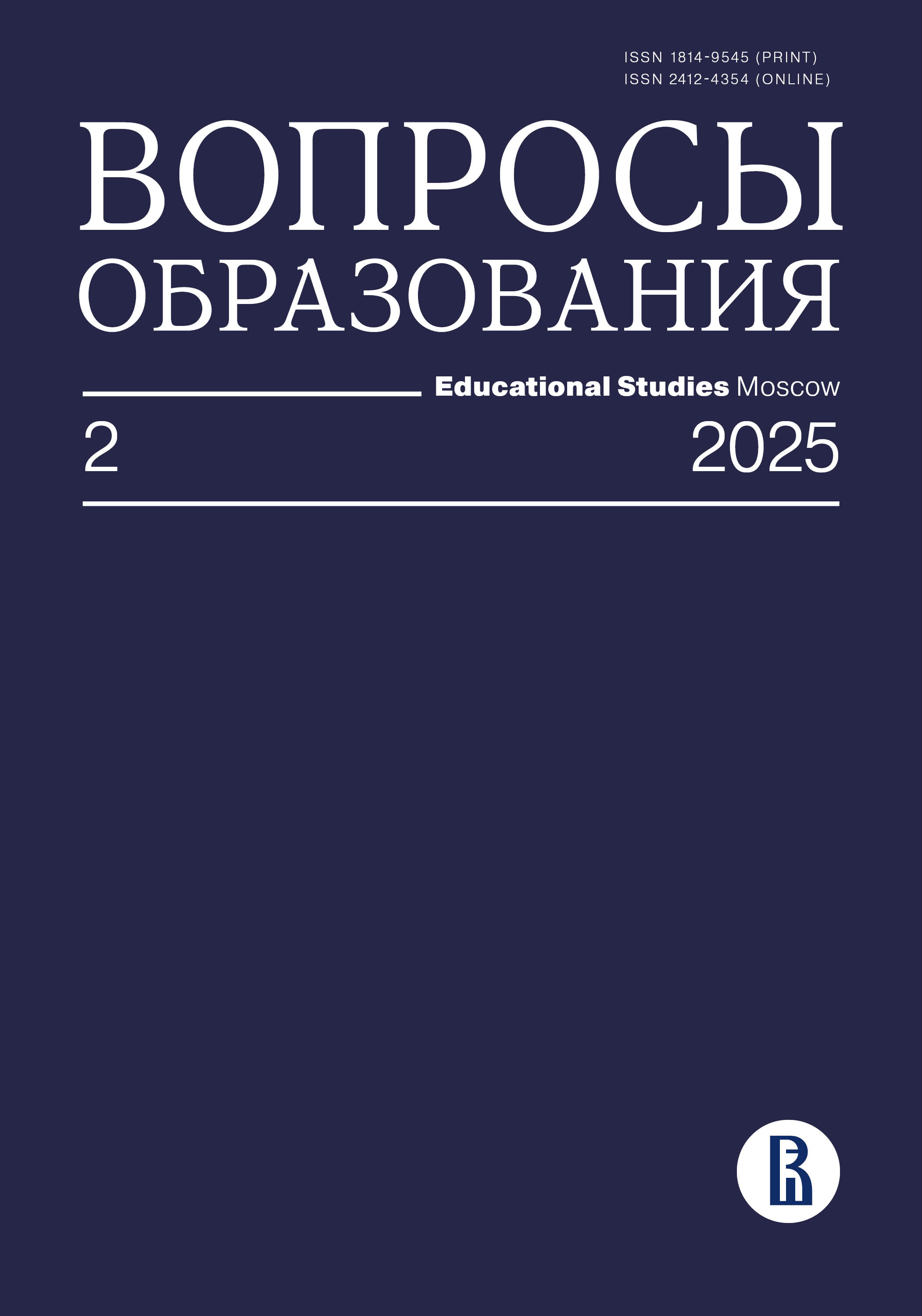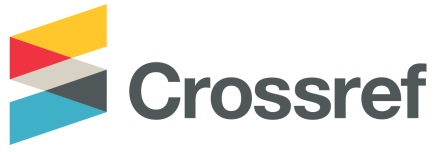Reading Assessment Tool “LexiMetr” for Russian-Speaking Primary School Students
Abstract
The present article describes the creation and standardization of the “LexiMetr” reading assessment tool, designed to evaluate reading skills in Russian-speaking primary school students. A distinguishing feature of the “LexiMetr” test is its linguistic validity. Namely, the test comprises two texts to read out-loud, controlled for their objective complexity based on a range of psycholinguistic features. The test is created in a user-oriented digital application for tablets.
Analysis of reading data from 281 children revealed that texts differed in their difficulty despite their comparable linguistic complexity. Nevertheless, a further study with experimental data from 49 children showed no differences in reading performance between tablets and paper sheets. We report normative data of reading speed and text comprehension accuracy across grades 1 to 4 that were collected in 333 typically developing children.
A high correlation of reading data from the test “LexiMetr” (rho = 0.95) with the Standardized assessment of reading skills (Kornev 1997, Kornev, Ishimova 2010) demonstrates the concurrent validity of the test as a diagnostic instrument for reading disorders in Russian-speaking primary school students. Currently, the test is recommended as a screening tool for reading skills assessment. However, it is planned to refine the test by integrating sensitivity and specificity metrics for the future in speech-language pathology and education as a diagnostic tool. Analysis and normative data are freely available at OSF platform https://osf.io/nkxz7/, where a link to the app will be available.
Downloads
References
Akhutina T.V., Inshakova O.B. (eds) (2008) Neuropsychological Diagnostics, Assessment of Writing and Reading of Primary School Students. Moscow: Sfera (In Russian).
Alexeeva S., Slioussar N., Chernova D. (2017) StimulStat: A Lexical Database for Russian. Behavior Research Methods, vol. 50, no 6, pp. 2305–2315. https://doi.org/10.3758/s13428-017-0994-3
Bühner M. (2011) Einführung in die Test- und Fragebogenkonstruktion. Műnchen: Pearson Deutschland GmbH.
Clinton V. (2019) Reading from Paper Compared to Screens: A Systematic Review and Meta‐Analysis. Journal of Research in Reading, vol. 42, no 2, pp. 288–325. https://doi.org/10.1111/1467-9817.12269
Dahl Ö. (2004) The Growth and Maintenance of Linguistic Complexity. Amsterdam; Philadelphia: John Benjamins. https://doi.org/10.1075/slcs.71
Dawidowsky K., Holz H., Schwerter J., Pieronczyk I., Meurers D. (2021) Development and Evaluation of a Tablet-Based Reading Fluency Test for Primary School Children. Proceedings of the 23rd International Conference on Mobile Human-Computer Interaction (Toulouse & Virtual Event, France, 2021, 27 September — 1 October). Article no 42. https://doi.org/10.1145/3447526.3472033
Dehaene S. (2009) Reading in the Brain: The Science and Evolution of a Human Invention. New York, NY: Viking.
Delgado P., Salmerón L. (2022) Cognitive Effort in Text Processing and Reading Comprehension in Print and on Tablet: An Eye-Tracking Study. Discourse Processes, vol. 59, no 4, pp. 237–274. https://doi.org/10.1080/0163853x.2022.2030157
Dorofeeva S.V. (2017) Linguistic Aspects of Dyslexia and Dysgraphia Correction: Successful Implementation of an Integrative Approach. Journal of Psycholinguistics, no 33, pp. 184–201 (In Russian).
Dorofeeva S.V., Reshetnikova V.A., Serebryakova M.N., Goranskaya D.N., Akhutina T.V., Dragoy O.V. (2019) Assessing the Validity of the Standardized Assessment of Reading Skills in Russian and Verifying the Relevance of Available Normative Data. The Russian Journal of Cognitive Science, vol. 6, no 1, pp. 4–24 (In Russian).
François T., Fairon C. (2012) An "AI Readability" Formula for French as a Foreign Language. Proceedings of the 2012 Joint Conference on Empirical Methods in Natural Language Processing and Computational Natural Language Learning (Jeju Island, Korea, 2012, July 12–14), pp. 466–477. Available at: https://aclweb.org/anthology/D/D12/D12-1043.pdf (accessed 20 April 2025)
Galliussi J., Perondi L., Chia G., Gerbino W., Bernardis P. (2020) Inter-Letter Spacing, Inter-Word Spacing, and Font with Dyslexia-Friendly Features: Testing Text Readability in People with and without Dyslexia. Annals of Dyslexia, vol. 70, no 1, pp. 141–152. https://doi.org/10.1007/s11881-020-00194-x
Hermena E.W., Sheen M., AlJassmi M., AlFalasi K., AlMatroushi M., Jordan T.R. (2017) Reading Rate and Comprehension for Text Presented on Tablet and Paper: Evidence from Arabic. Frontiers in Psychology, vol. 8, February, Article no 257. https://doi.org/10.3389/fpsyg.2017.00257
Ivanova M.V., Akinina Yu.S., Soloukhina O.A., Iskra E.V., Buivolova O.V., Chrabaszcz A.V., Stupina E.A., Khudyakova M.V., Akhutina T.V., Dragoy O. (2021) The Russian Aphasia Test: The First Comprehensive, Quantitative, Standardized, and Computerized Aphasia Language Battery in Russian. PLOS One, vol. 16, no 11, Article no e0258946. https://doi.org/10.1371/journal.pone.0258946
Johansson V. (2008) Lexical Diversity and Lexical Density in Speech and Writing: A Developmental Perspective. Working Papers of Lund University no 53, pp. 61–79.
Kornev A.N. (1997) Reading and Writing Disorders in Children: Educational and Methodological Manual. Saint Petersburg: MiM (In Russian).
Kornev A.N., Ishimova O.A. (2010) Methods of Diagnosing Dyslexia in Children: A Methodological Manual. Saint Petersburg: Polytechnic University (In Russian).
Korobov M. (2015) Morphological Analyzer and Generator for Russian and Ukrainian Languages. Communications in Computer and Information Science, vol. 542, pp. 320–332. https://doi.org/10.1007/978-3-319-26123-2_31
Köpper M., Mayr S., Buchner A. (2016) Reading from Computer Screen versus Reading from Paper: Does It Still Make a Difference? Ergonomics, vol. 59, no 5, pp. 615–632. https://doi.org/10.1080/00140139.2015.1100757
Lalaeva R.I. (1983) Violation of the Process of Mastering Reading in Schoolchildren. Moscow: Prosveshchenie (In Russian).
Laposhina A.N., Veselovskaya T.S., Lebedeva M.Yu., Kupreshchenko O.F. (2019) Lexical Analysis of the Russian Language Textbooks for Primary School: Corpus Study. Proceedings of the International Conference on Computational Linguistics "Dialogue 2019” (Moscow, 2019, 29 May — 1 June), iss. 19, pp. 1036–1048 (In Russian).
Laposhina A.N., Lebedeva M.Yu. (2021) Textometr: An Online Tool for Automated Complexity Level Assessment of Texts for Russian Language Learners. Russian Language Studies, vol. 19, no 3, pp. 331–345 (In Russian). https://doi.org/10.22363/2618-8163-2021-19-3-331-345
Lenhard W., Lenhard A., Schneider W. (2020) ELFE II: Ein Leseverständnistest fűr Erst- bis Siebtklässler — Version II. Göttingen: Hogrefe.
Lenhard W., Schroeders U., Lenhard A. (2017) Equivalence of Screen Versus Print Reading Comprehension Depends on Task Complexity and Proficiency. Discourse Processes, vol. 54, no 5–6, pp. 427–445. https://doi.org/10.1080/0163853x.2017.1319653
Lyashevskaya O.N., Sharoff S.A. (2009) Frequency Dictionary of Contemporary Russian Based on the Russian National Corpus Data. Moscow: Azbukovnik (In Russian).
Maslinskiy K.A., Lekarevich E.V., Aleynik L. (2021) Corpus of Russian Prose for Children and Youth. Repository of Open Data on Russian Literature and Folklore, version V3, Data set (In Russian). https://doi.org/10.31860/openlit-2021.4-C001
McCauley R.J., Swisher L. (1984) Psychometric Review of Language and Articulation Tests for Preschool Children. Journal of Speech and Hearing Disorders, vol. 49, no 1, pp. 34–42. https://doi.org/10.1044/jshd.4901.34
McKinney W. (2010) Data Structures for Statistical Computing in Python. Proceedings of the 9th Annual Scientific Computing with Python Conference (Austin, TX, 2010, June 28 — July 3), pp. 56–61. https://doi.org/10.25080/majora-92bf1922-00a
Morozova L.V., Murin I.N. (2013) Psychophysiological Features of Type Font Perception. Vestnik of Nortnern (Arctic) Federal University. Series "Natural Sciences", no 3, pp. 76–85 (In Russian).
Oborneva I.V. (2006) Automated Assessment of the Complexity of Educational Texts on the Basis of Statistical Parameters (PhD Thesis). Moscow: Institute of Educational Content and Methods of the Russian Academy of Education (In Russian).
Ramus F. (2003) Developmental Dyslexia: Specific Phonological Deficit or General Sensorimotor Dysfunction? Current Opinion in Neurobiology, vol. 13, no 2, pp. 212–218. https://doi.org/10.1016/s0959-4388(03)00035-7
Rello L., Baeza-Yates R. (2013) Good Fonts for Dyslexia. Proceedings of the 15th International ACM SIGACCESS Conference on Computers and Accessibility (Bellevue, WA, 2013, October 21–23), https://doi.org/10.1145/2513383.2513447
Rello L, Bigham J.P. (2017) Good Background Colors for Readers: A Study of People with and without Dyslexia. Proceedings of the 19th International ACM SIGACCESS Conference on Computers and Accessibility (Baltimore, MD, 2017, 20 October — 1 November), pp. 72–80. https://doi.org/10.1145/3132525.3132546
Richter T., Naumann J., Isberner M.-B., Neeb Y., Schindler J. (2017) ProDi-L: Prozessbezogene Diagnostik von Lesefähigkeiten im Grundschulalter. Zeitschrift fűr Pȁdagogische Psychology, vol. 26, iss. 4. https://doi.org/10.1024/1010-0652/a000079
Rusetskaya M.N. (2018) Dyslexia Diagnosis and Correction on the Basis of Complex Approach towards Reading Development. Writing and Reading Impairments in Children: Exploration and Correction (ed. O.A. Velichenkova), Moscow: Logomag, pp. 151–165 (In Russian).
Salmerón L., Altamura L., Delgado P., Karagiorgi A., Vargas C. (2023) Reading Comprehension on Handheld Devices Versus on Paper: A Narrative Review and Meta-Analysis of the Medium Effect and Its Moderators. Journal of Educational Psychology, vol. 116, no 2, pp. 153–172. https://doi.org/10.1037/edu0000830
Schiavo G., Buson V. (2014) Interactive e-Books to Support Reading Skills in Dyslexia. Paper presented at: IBOOC2014 — 2nd Workshop on Interactive eBook for Children at IDC (Aarhus, Denmark, 2014, June 17–20).
Seifert S., Paleczek L. (2021) Digitally Assessing Text Comprehension in Grades 3–4: Test Development and Validation. Electronic Journal of e-Learning, vol. 19, no 5, pp. 336–348. https://doi.org/10.34190/ejel.19.5.2467
Semenovich A.V. (2002) Neuropsychological Diagnosis and Correction in Childhood. Moscow: Akademia (In Russian).
Tindall-Ford S., Chandler P., Sweller J. (1997) When Two Sensory Modes Are Better Than One. Journal of Experimental Psychology: Applied, vol. 3, no 4, pp. 257–287. https://doi.org/10.1037//1076-898x.3.4.257
Van Rossum G., Drake F.L. (2009) Python 3 Reference Manual: Python Documentation Manual Part 2. CreateSpace Independent Publishing Platform.
Vasyuta S.P., Khamula O.G. (2013) The Influence of Reading Speed Font Easy to Read in the Electronic Editions. The Eurasian Scientific Journal, no 3 (16), pp. 56–61 (In Russian).
Velichenkova O.A., Akhutina T.V., Rusetskaya M.N., Gusarova Z.V. (2019) The Problem of Disorders of Spelling and Reading in Children: Data of the All-Russian Poll. Special Education, no 3 (55), pp. 36–49. https://doi.org/10.26170/sp19-03-03 (In Russian).
Wagner R.K., Torgesen J.K. (1987) The Nature of Phonological Processing and Its Causal Role in the Acquisition of Reading Skills. Psychological Bulletin, vol. 101, no 2, pp. 192–212. https://doi.org/10.1037//0033-2909.101.2.192
White S., Milne E., Rosen S., Hansen P., Swettenham J., Frith U., Ramus F. (2006) The Role of Sensorimotor Impairments in Dyslexia: A Multiple Case Study of Dyslexic Children. Developmental Science, vol. 9, no 3, pp. 237–255. https://doi.org/10.1111/j.1467-7687.2006.00483.x
World Bank (2019) Ending Learning Poverty: What Will It Take? https://doi.org/10.1596/32553
Yoliando F.T. (2020) A Comparative Study of Dyslexia Style Guides in Improving Readability for People with Dyslexia. Proceedings of the International Conference of Innovation in Media and Visual Design (Tangerang, Indonesia, 2020, November 10–11), pp. 32–37. https://doi.org/10.2991/assehr.k.201202.050









